10 Drought-Tolerant Ground Covers That Can Withstand Full Sun
California water restrictions may be strengthened or relaxed as our drought level changes, but it is well past time to accept that we are living in what is essentially a constant state of drought. This means we need to continue our current efforts to save water while also looking for new ways to cut our water usage even more. To do this, we need to make good decisions both inside and outside of our homes where most of our water usage happens, especially in semi-arid communities like El Cajon and Santee.
According to the Environmental Protection Agency (EPA), homeowners use between 30- and 70-percent of their water outdoors. The EPA also points out that up to 50-percent of this outdoor residential water usage is wasted through inefficient irrigation. Knowing this, one way to do cut down on our water usage is to assess our current landscaping and see if there are places where switching to low-water ground cover options makes sense. For example, could you reduce the size of your natural grass lawn by adding a gravel walkway or a flower island? Could you fill bare spots in your yard with a drought-resistant ground cover that thrives in full sun? Could you replace water-loving exotic plants with native plants that have lower water needs?
Let’s take a look at 10 ground covers that love the sun and can survive a drought to get some water-saving inspiration.
10 Drought-Tolerant Ground Covers for Sun
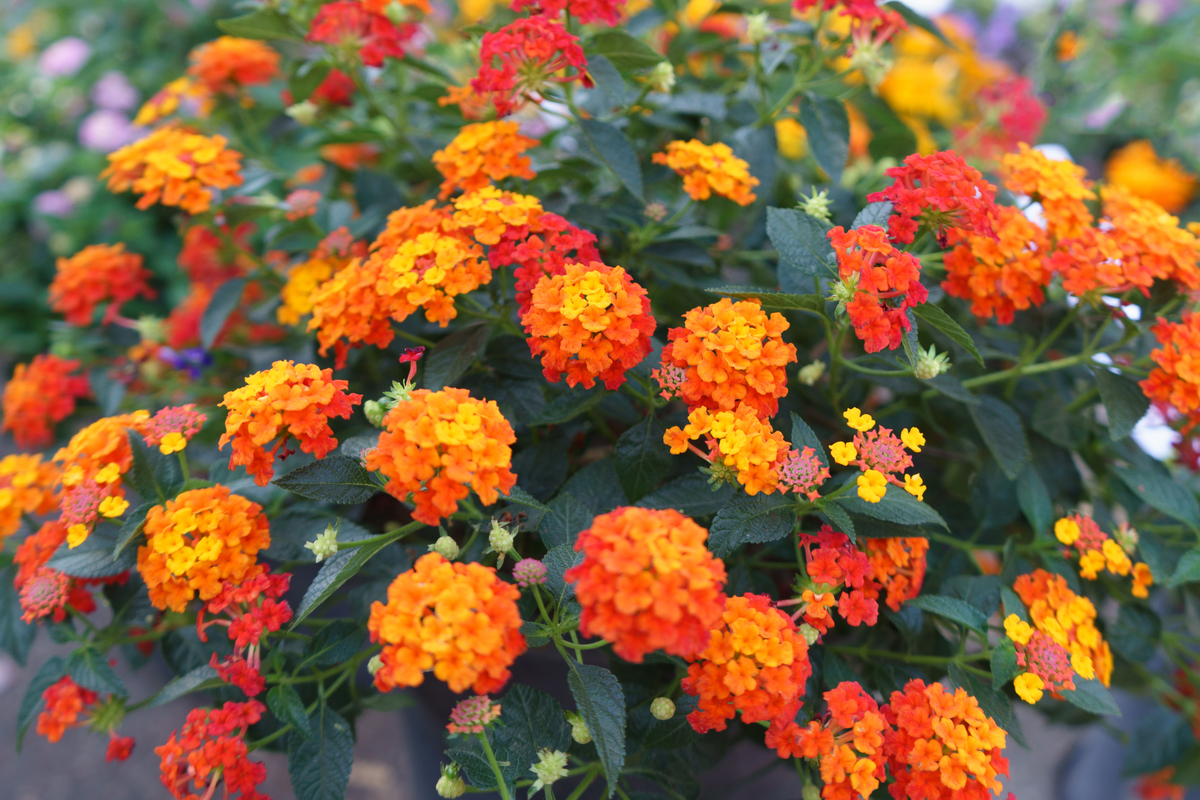
1. Lantana
This common ground cover is easy to find at garden centers and home improvement stores. It requires very little care, loves the sun, and is drought tolerant once established. There are dozens of varieties from which to choose, and this flowering perennial is available with white, yellow, orange, red, pink, or blue blossoms.
Aside from choosing the right color to harmonize with your other plants, the most important thing to remember when buying lantana is that there are ground cover cultivars and shrub cultivars that can grow to more than six feet in height. So, you need to be sure you are purchasing a variety used for ground cover.
Lantana is great for filling in bare spots and will spread easily to provide a beautiful, colorful ground cover in your yard. It also attracts butterflies and bees, so planting lantana can help other plants in your garden thrive.
This drought-resistant ground cover is incredibly popular in Southern California and Central California, which is more evidence of its ability to thrive in this area.
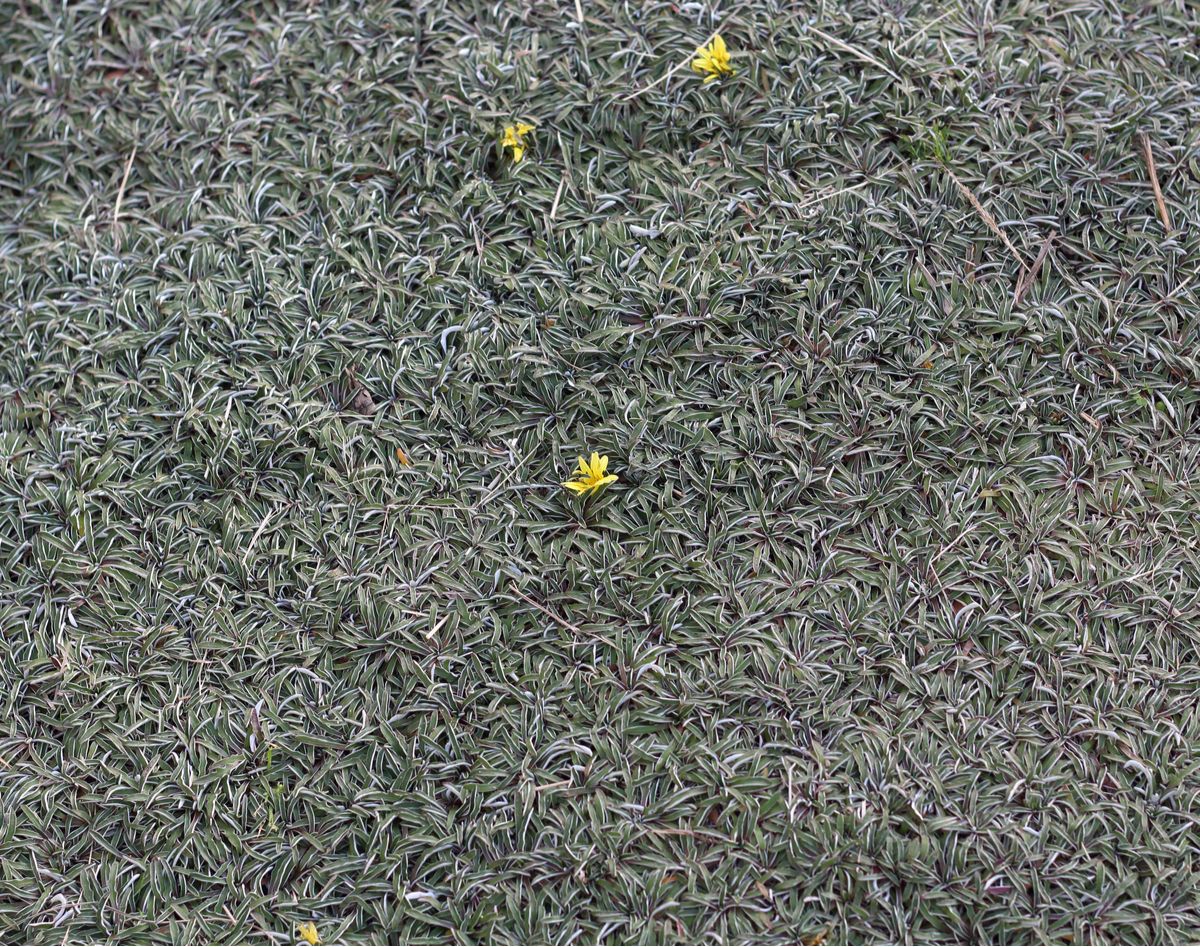
2. Silver Carpet
Also known as Cerastium, chickweed, and snow in summer, this is another flowering perennial that does well in full sun. This is a popular choice for rock gardens and has small flowers. Silver carpet usually blooms in late spring and early summer, but the silver-gray leaves provide an attractive, low-water ground cover all year. Once established, silver carpet will only require extra irrigation during times of extreme drought or heat.
Silver Carpet is not native to California, but it is native to a similarly hot, dry climate in the coastal plains of South Africa, which is why it can do so well here. Because it is a coastal plant, it also can survive salt spray, which makes it a good choice for folks who live on or near the beach.
This evergreen perennial usually spreads slowly, but you can pick up the pace a bit by providing extra water early on to help it get established and encourage it to spread. Once established, you can back off on irrigation to save water.
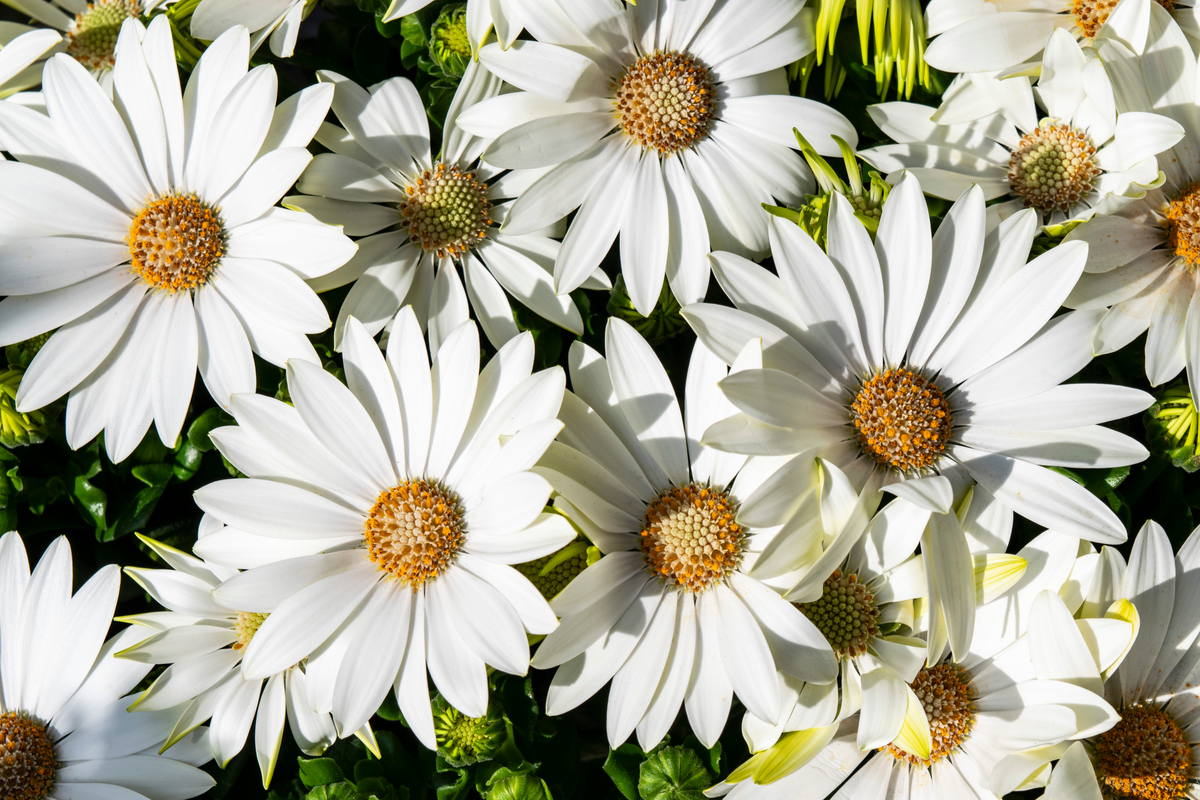
3. Spanish Daisy
Growing to about eight inches in height, this flowering, fast-growing perennial is a great choice for use as a ground cover in borders, rock gardens, rock walls, and around pathways. Although it is native to Mexico and Central America, it thrives in Southern California. This one does require a bit more work when it comes to cleaning up your flowerbeds as lower foliage dies off, but for those who love the look of the flowers, it is worth the extra effort.
Spanish daisies are also known as Santa Barbara daisies, Mexican daisies, and Mexican fleabane. It is not a true daisy, but its flowers look like daisies, which is part of the reason for its popularity. It is also well loved for its ability to spread quickly to fill crevices and add color to flowerbeds.
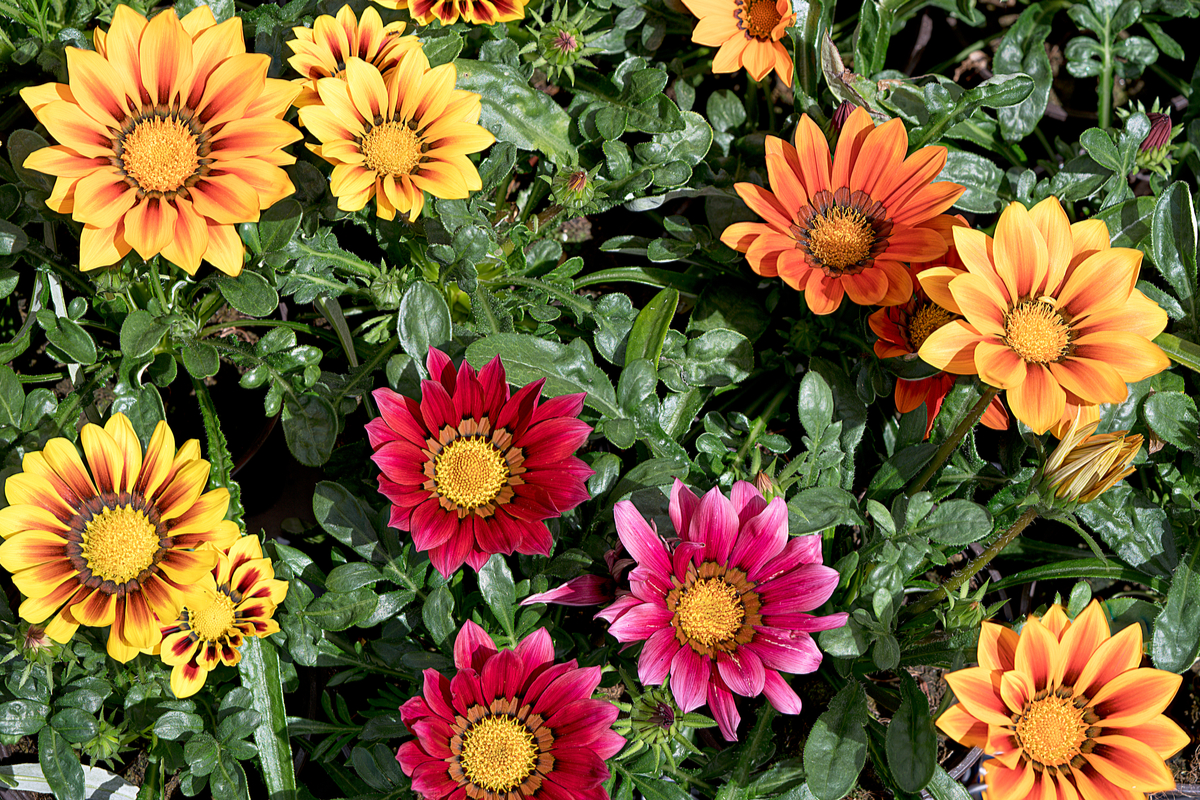
4. Gazania
Gazanias are native to the southern part of the African continent and have proven to be a good choice for use as a drought-tolerant ground cover for sun in Southern California. Sometimes called treasure flowers or African daisies, be careful not to confuse these with true African daisies. True African daisies (Osteospermum) also do well in full sun, but they are annuals, so you will not get the same longevity from them.
Gazanias have larger blooms than most of the other choices on this list and flowers bloom through summer and into fall.
Flowers come in yellow, orange, yellow and orange, white and yellow, white and purple, red and pink. Because they grow in low mounds with large flowers, this is a particularly popular choice for borders and flowerbeds. Your gazania mounds will grow up to about 18 inches tall and wide. You can increase your plantings by propagating through cuttings.
This colorful option can also withstand salt spray, so they can be used in drought-tolerant gardens near or on the beach.
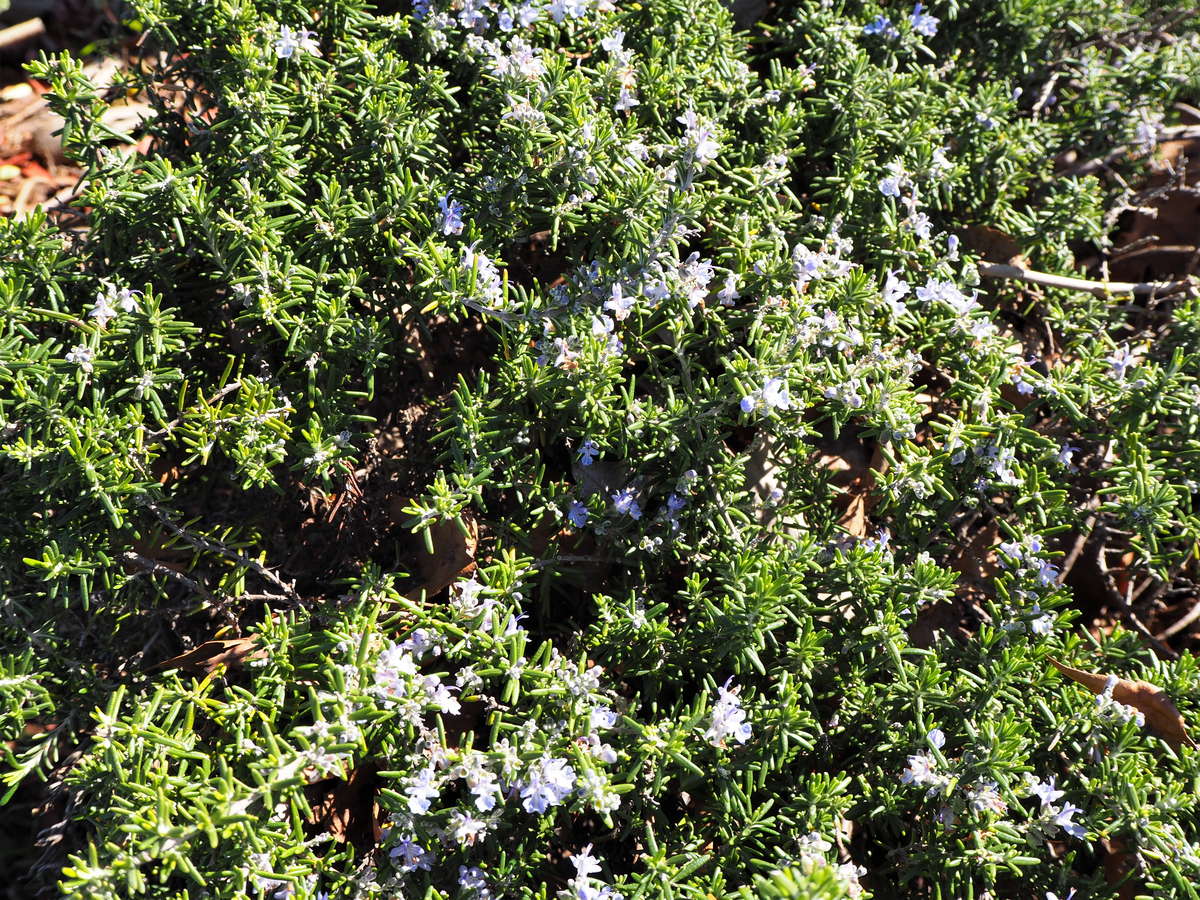
5. Creeping Rosemary
Also known as prostrate rosemary, this fast-growing evergreen does well in full sun and is a beautiful choice for cascading over rock walls or for use in rock gardens. This drought-tolerant ground cover for sun can be used for culinary purposes and usually grows to about six to twelve inches in height.
Creeping rosemary usually flowers during the summer, and the purple flowers usually stay through the beginning of fall. When not in bloom, the foliage provides an attractive, durable ground cover. As an added bonus, creeping rosemary attracts pollinators, which benefits the rest of your garden as well.
Creeping rosemary creates a fragrant ground cover so it also adds this additional dimension to your San Diego landscaping. It does a good job of crowding out weeds and is such a good spreader that it can become invasive. This is not necessarily a bad thing, since we generally do want ground covers to cover a lot of ground, but, if you find that your rosemary is covering too much ground, you can easily prune it to keep it under control.
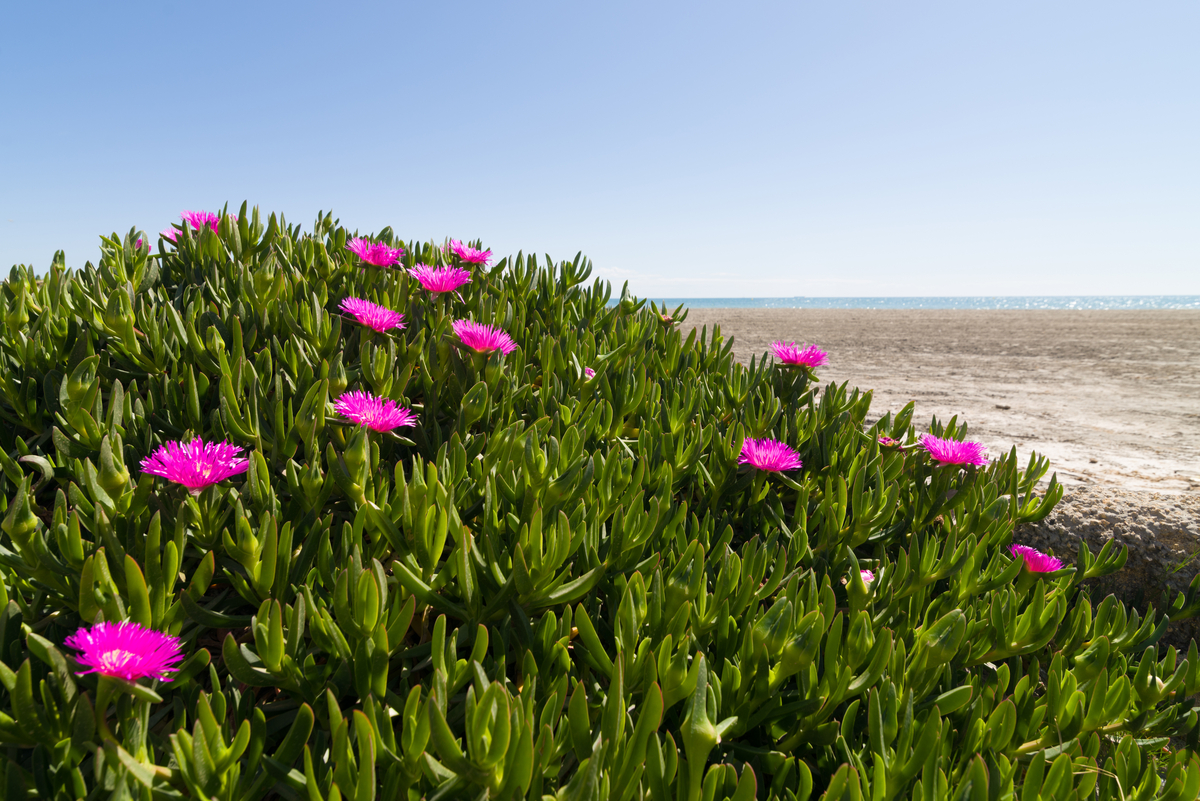
6. Ice Plant
Low-growing ice plant (aka iceplant) is a low-water ground cover that Californians are accustomed to seeing all along the coast. It is so ubiquitous near our beaches that most of us already know that ice plant is a great choice for seaside homes and can thrive in full sun further inland as well. Depending on the variety you choose, your ice plant may bloom in white, yellow, purple, or pink flowers. It is usually in bloom through summer and fall.
Ice plant is a succulent, so too much water is actually bad for it. It will do well for you in poor soil but not in wet soil, so it is great for dry climates and areas that often experience drought. Since this is a succulent, it is easy to propagate, and you can do so through dividing your plants or by taking cuttings. This will help you more quickly cover a larger area.
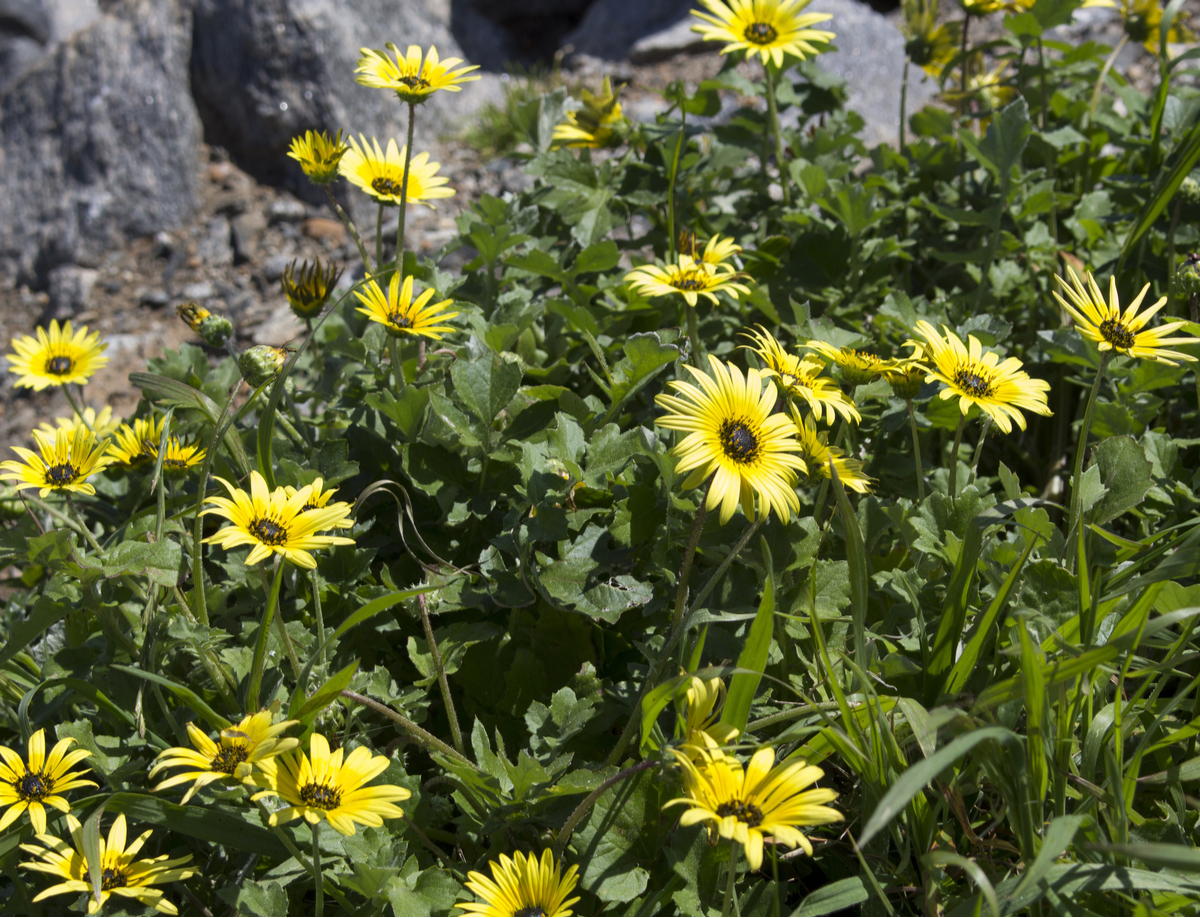
7. Cape Weed
This tiny member of the sunflower family is considered a weed in many areas, which is actually good news for folks looking for a fast-growing ground cover that will quickly fill in a large, bare spot in their yard. With small, daisy-like flowers, these perennials are an inexpensive, easy way to cover large areas that receive full sun. Since California is one of the places where it is naturalized and grows like a weed, you know that it can thrive in drought conditions.
It can become invasive and can completely take over a natural grass lawn, so you may need to keep an eye on it. Capeweed is toxic to horses and other livestock, so do not grow it in pastures or near corrals. It does attract pollinators, though, so it can help bring bees and other pollinators into your yard to help out other plants.
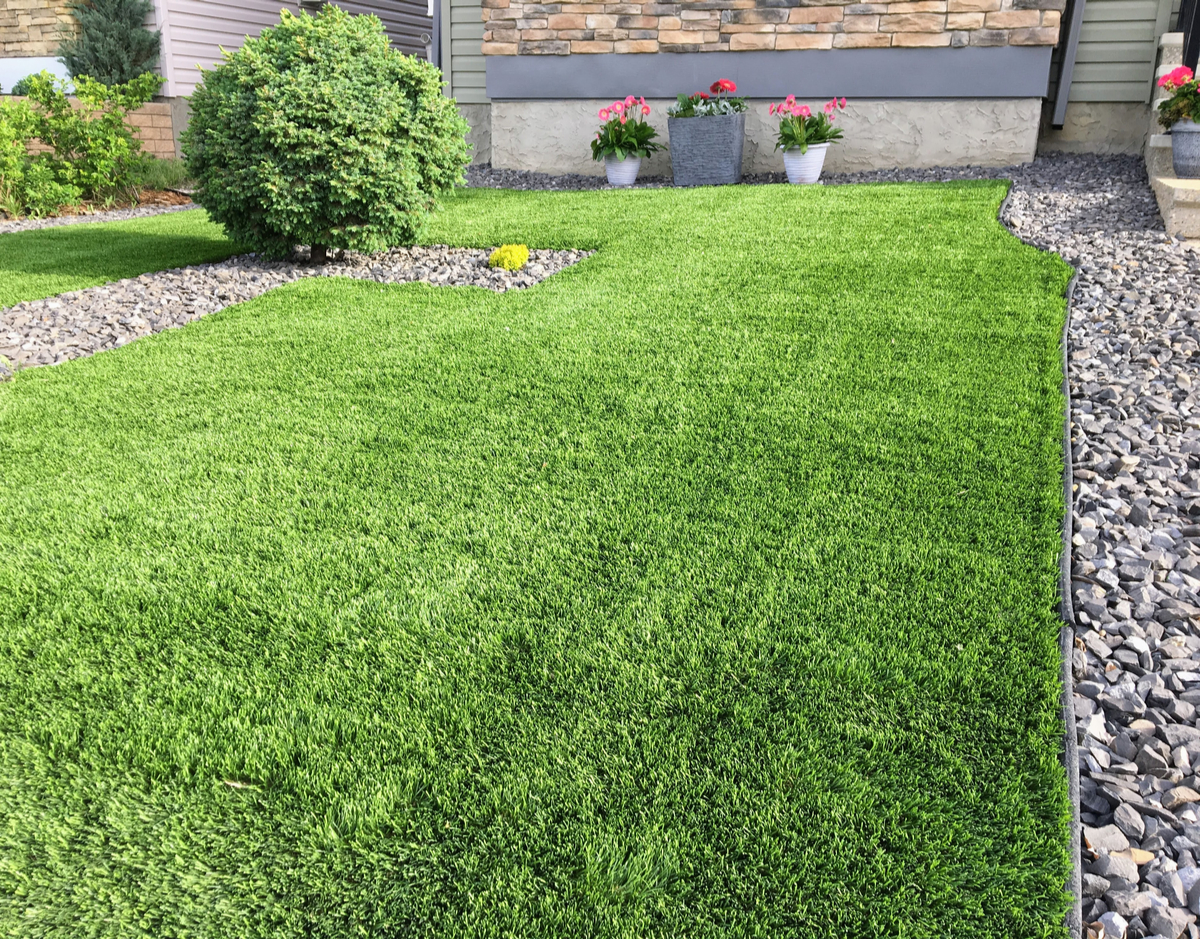
8. Artificial Grass
If you want the look of a green, lush ground cover without the water requirements, synthetic turf is a great choice. Because it is a non-living ground cover, it can be used in full sun, partial sun or shade, and even in spots where nothing will grow. This no-water ground cover is easy to maintain, always looks its best and can be used in areas of high traffic. It can also be used as an attractive ground cover in dog runs, under playground equipment, and around swimming pools.
The versatility and longevity of artificial grass makes this a solid investment for folks looking for drought-resistant ground cover options. It looks, feels, and functions like natural grass but does not require the hours or weeding, mowing, aerating, edging, and fertilizing. It also requires very little water, since it needs no irrigation. Really, the only time you will need to use water on it at all is to spray off the dust every once in a while or to rinse down areas your pets use as a restroom.
Synthetic turf is a good choice for a variety of situations. For example, it is perfect for a low-maintenance backyard putting green or sports field, provides a level surface for kids to play on, and is easy to clean with a product like Urine Zero if you use it in a dog run or for a lawn that is shared with your pets. You can also use it for areas where you entertain guests or in high-traffic areas, since it is easy to fluff and can withstand heavy traffic.
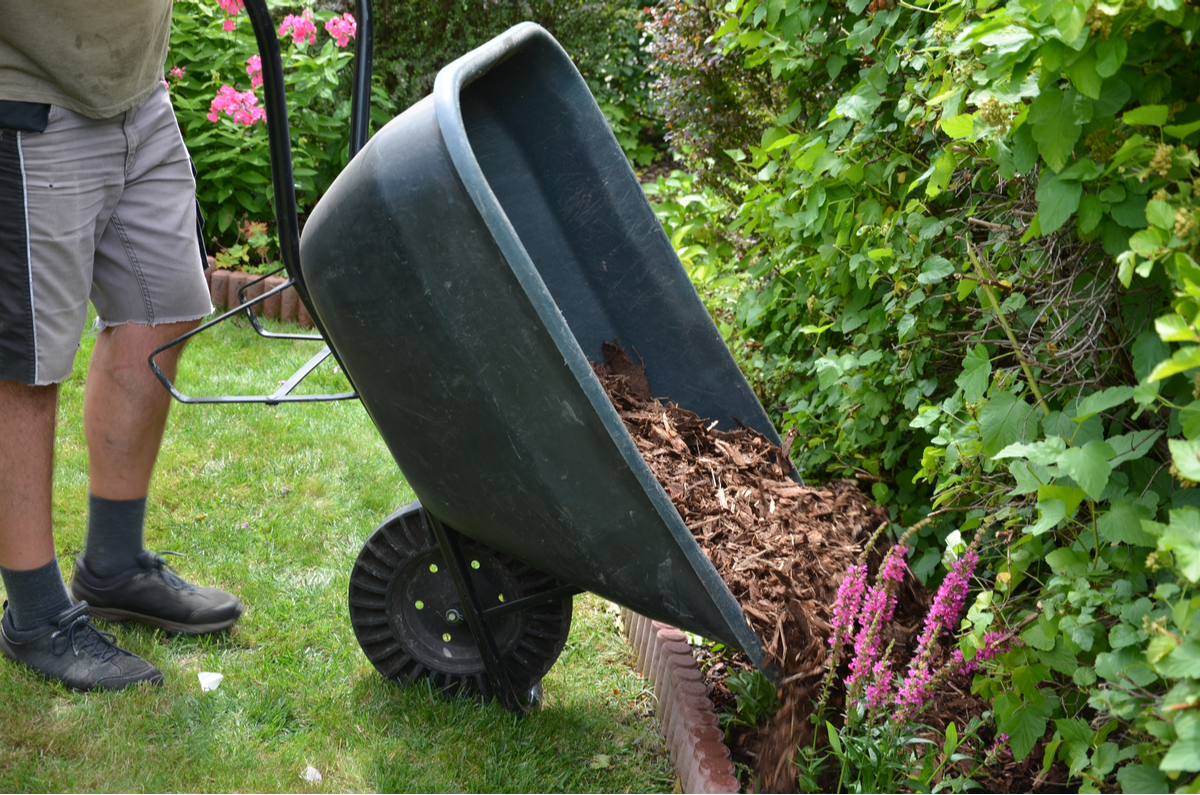
9. Wood Chips or Bark
This is another no-water ground cover option that beautifies your yard and can help limit weed growth. You may need to refresh your bark or wood chips every year or every few years (depending on the type you use), since it may fade in the sun or break down into the soil. This drought-friendly ground cover option is a particularly good choice for homeowners looking for an inexpensive, easy-care option that requires very little maintenance.
Wood chips or bark can be used for walkways, around trees, to cover bare earth in flowerbeds, or to cover larger spaces, such as outdoor entertaining areas. Aside from limiting weed growth, it can also reduce mud after rain, help the soil retain moisture, help maintain soil temperature, and add texture and color to your landscape design.
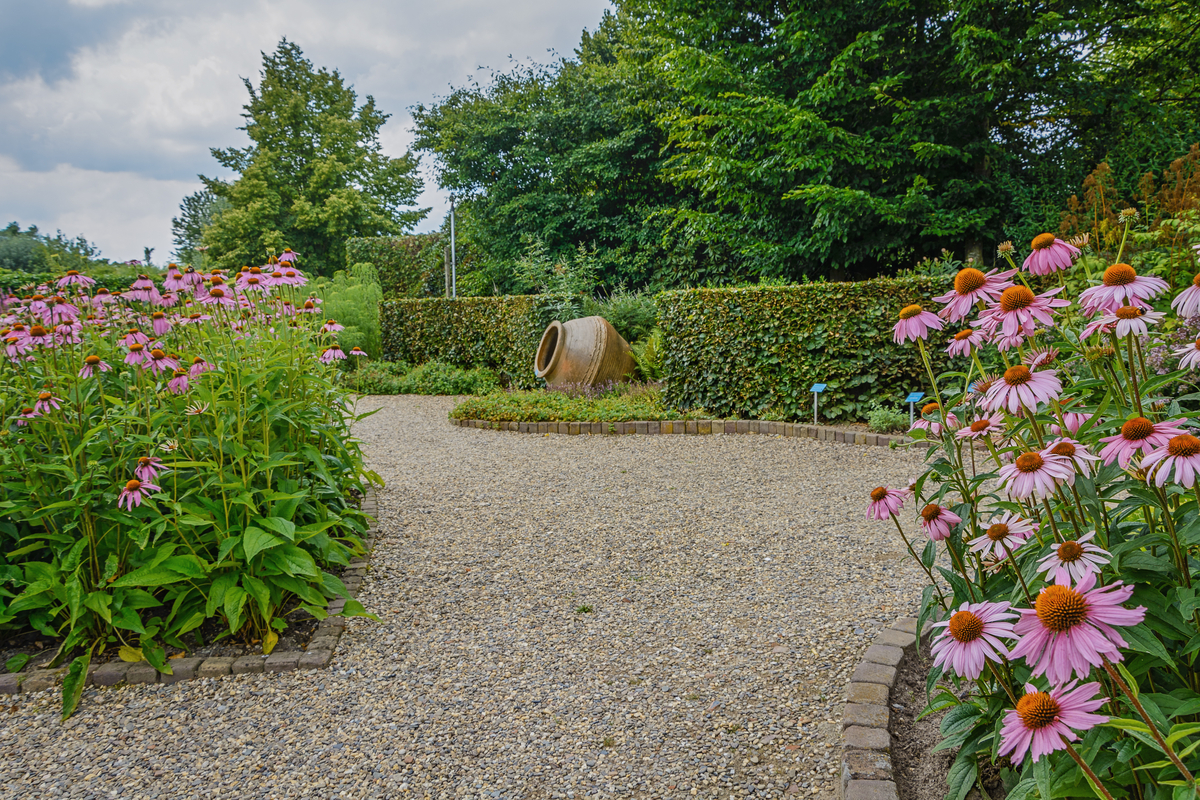
10. Gravel
Gravel is great for walkways, driveways, dog runs, and outdoor living areas. With the wide variety of colors and sizes available, gravel is also an excellent ground cover option for folks looking for something that requires no water.
Gravel helps limit weed growth, retain soil moisture, control erosion, and maintain soil temperature. It is also generally a more affordable option, so this may be a more flexible choice for folks working with a smaller budget.
Saving Water with Drought-Resistant Ground Covers: Next Steps
If the above options inspired you to transition to low-water landscaping and start saving more water inside your home and in your landscaping, here are some next steps you can take to start saving water today:
- Take the “I’m for Water” pledge on the EPA’s WaterSense website.
- Use the EPA’s WaterSense monthly resolutions checklist to commit to making small changes to save more water every month.
- Read 7 Drought-Tolerant Herbs for Southern California Gardens to learn more about drought-resistant plants that bring color and texture to your garden.
- Read 8 Drought-Tolerant Plants to Line Your Driveway to learn more about low-water border plants you can use in your landscape design.
- Subscribe to the WaterSense Current to get this newsletter filled with water-saving tips delivered regularly to your inbox.
- Read 10 Easy Succulents for Your Drought-Tolerant Garden or, if you are not in to succulents, check out 10 Great Plants for Drought that Are not Succulents.
- If you are considering synthetic turf as an option for a lush, green lawn without the water waste, visit the Artificial Grass Cost Calculator to get a better idea of how much your installation will cost.
- Learn more about the artificial grass installation process and which type of turf is best for your project.